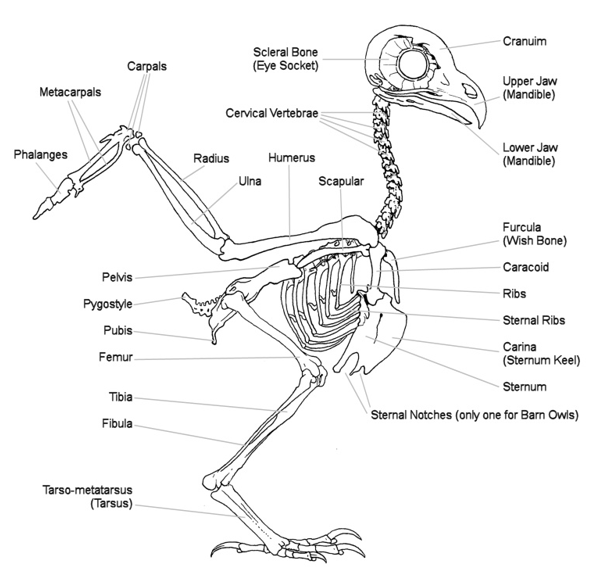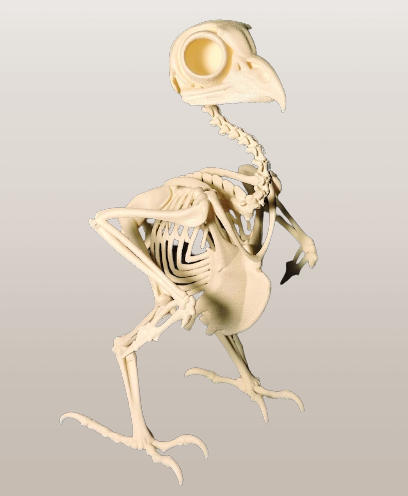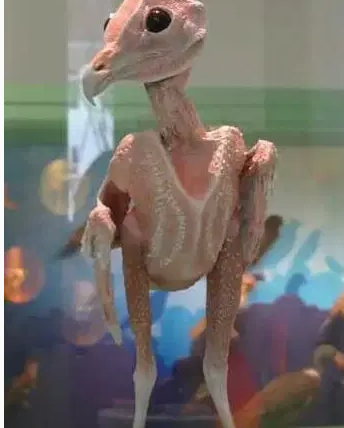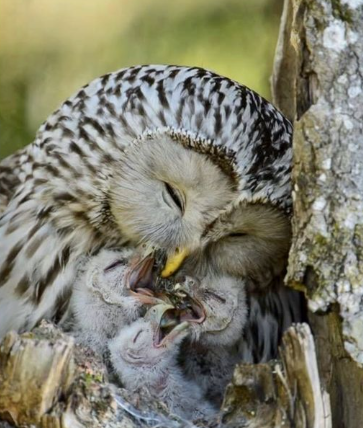Fascinated by this amazing looking Creature .. Lets explore the Topic in detail

Introduction:
Owls, with their enigmatic presence and nocturnal prowess, have long fascinated both nature enthusiasts and scientists alike. Yet, beyond their captivating exterior lies a hidden marvel—the intricate and finely tuned skeleton that empowers them to thrive in their unique habitats.
In this comprehensive exploration, we embark on a journey to uncover the secrets of owl skeletons, delving into their structure and adaptations and the remarkable ways they contribute to these birds of prey’s survival.
I would like to give credit to Owlpage for the skeletal Photos special thanks
The Foundation of Form: An Insight into Owl Skeletons

At the core of every living creature lies a skeletal framework that provides structure, support, and mobility. Owls, as remarkable aerial hunters, boast a skeletal system meticulously designed to accommodate their unique lifestyle. This foundation, made up of intricately interconnected bones, holds the key to understanding the intricacies of owl anatomy.
Owl skeletons, while sharing similarities with those of other avian species, exhibit distinct adaptations that cater to their nocturnal and predatory habits. Lightweight yet durable, an owl’s skeleton allows for both aerial prowess and terrestrial maneuverability.
Flight of Silence: The Enigma of Silent Owl Flight

The ability of owls to glide through the night sky in eerie silence has puzzled observers for centuries.
This phenomenon is closely linked to the unique structure of their skeletal components.
Bones, joints, and feathers synergize to minimize sound production during flight, granting owls the advantage of stealth while hunting or evading predators.
At the heart of silent flight lies the specialized structure of owl wing bones.
Adaptations such as hollow bones and feather patterns work in tandem to dampen noise, making owls virtually inaudible as they navigate through their surroundings.
Lightness and Strength: The Ingenious Design of Owl Bones

The skeletal architecture of owls embodies a delicate balance between lightweight construction and robust durability. Hollow bones contribute to reduced overall weight, facilitating effortless flight, while intricate internal bracing maintains structural integrity and strength. This design ensures that owls can effectively pursue prey while avoiding physical limitations.
Aerial Architects: Decoding the Wing Skeleton

Owls are renowned for their prowess in flight, a skill supported by their unique wing skeleton. Elongated primary feathers and a specialized wing bone structure allow owls to perform swift and precise aerial maneuvers. This mastery of flight is integral to their hunting strategies and contributes to their dominance in nocturnal environments.
Talons of Power: The Grip of Owl Leg Skeletons

A defining feature of owls is their formidable talons, which serve as the tools of their trade. The structure of owl leg bones, particularly those connected to the talons, ensures a powerful grip that can immobilize prey with precision. These adaptations are essential for successful hunting and survival.
Auditory Acuity: Owl Skulls and Exceptional Hearing

An owl’s skull plays a pivotal role in its sensory capabilities, particularly its exceptional sense of hearing. Asymmetrically shaped skulls enhance directional hearing, enabling owls to locate prey based on sound. The unique structure of the skull and its associated adaptations contribute to the owl’s remarkable auditory prowess.
The Pivot of Perception: Owl Neck and Spinal Column

The ability of owls to rotate their heads to astonishing angles has intrigued and inspired fascination. The structure of the owl’s neck and spinal column, characterized by multiple specialized vertebrae, facilitates this incredible movement. This adaptation allows owls to scan their surroundings without the need for extensive body motion.
Adapting Through Life: Owl Skeletons and Growth

The evolutionary journey of an owl is mirrored in the changes that occur within its skeletal structure throughout different life stages. From hatchlings to adults, owl skeletons adapt to meet the demands of growth, flight, and hunting. This adaptability underscores the role of the skeleton in ensuring the survival and success of owl species.
Guardians of Conservation: Owl Skeleton Studies
Beyond their biological significance, owl skeletons offer valuable insights into behavior, ecology, and conservation. Researchers utilize skeletal analysis to glean information about owl species, populations, and the health of ecosystems. By studying owl skeletons, scientists contribute to the protection and preservation of these magnificent birds and their habitats.
Unveiling the Hidden Symphony: The Legacy of Owl Skeletons
The owl’s skeleton is a testament to the marvels of evolution and the intricate web of adaptations that define life.
As we uncover the mysteries concealed within owl skeletons, we gain a profound appreciation for the beauty of nature’s design. From silent flight to agile hunting, every element of the owl’s skeleton contributes to their success as apex predators and guardians of the night.
Conclusion:
The Poetry of Nature’s Blueprint
The owl’s skeleton is a poetic masterpiece, with each bone and joint composing a symphony of survival, adaptability, and grace.
As we conclude our journey through the remarkable world of owl skeletons, we are reminded of the interconnectedness of all living beings and the boundless wonders that nature has to offer.
Owls, with their intricate skeletons and unparalleled abilities, inspire us to continue exploring, learning, and cherishing the mysteries of the natural world.
Given that it builds its nest on the ground, it may become a target for larger animals like coyotes, dogs, and foxes. It typically lays 4 to 9 eggs, which are incubated in the egg shell for one month.

Within a week of hatching, the young leave the dangerous nest and are able to care for themselves. one-piece skull with the jaw attached to the cranium.



